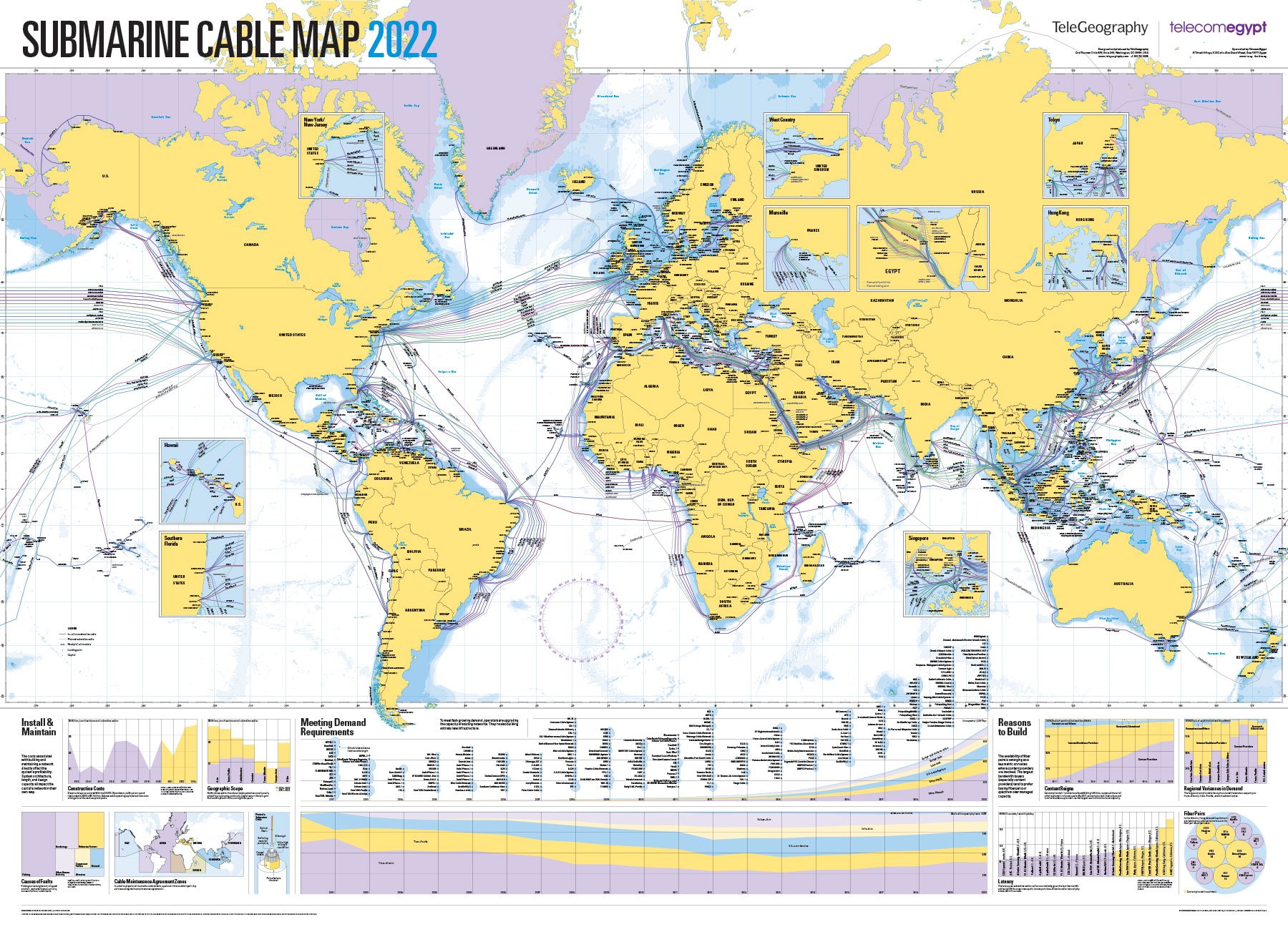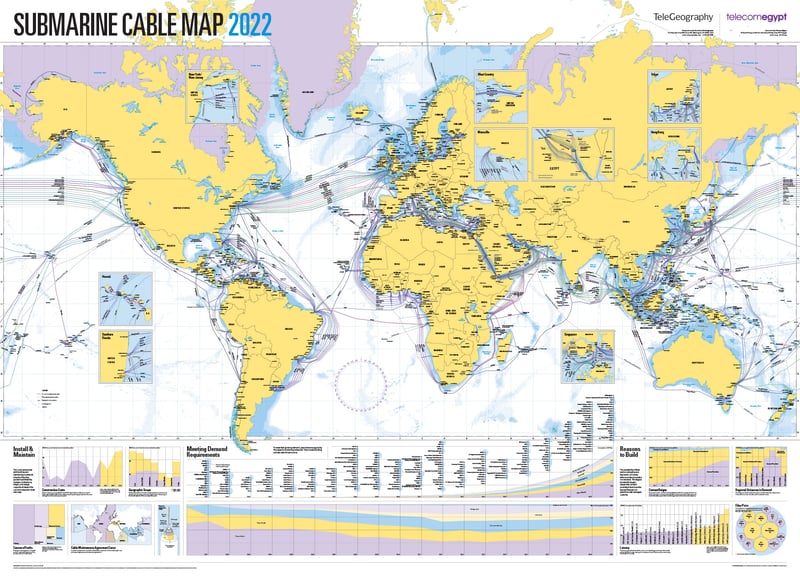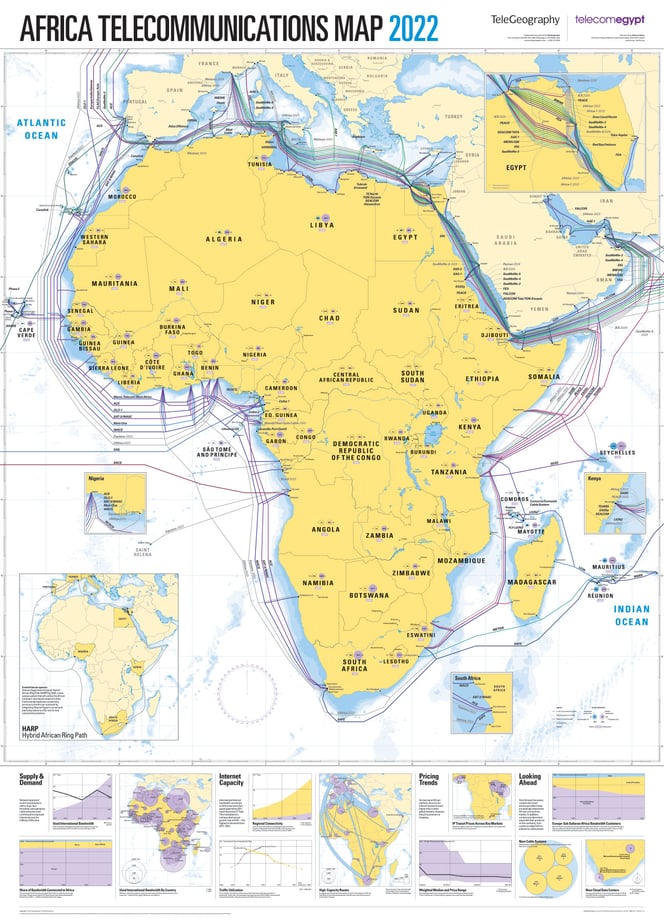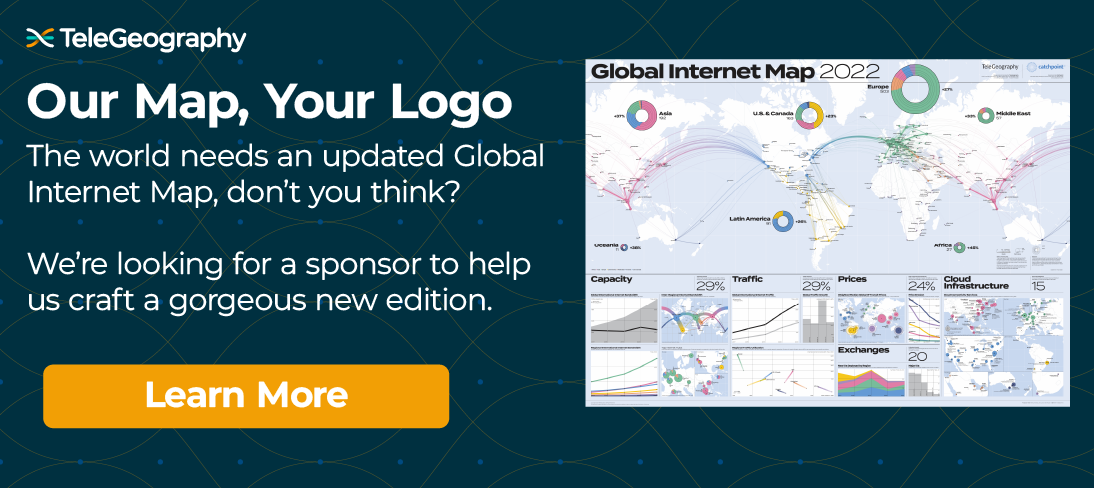It's the announcement you've been waiting for. And we've made it twice as nice, because not only is our 2022 Submarine Cable Map here—but so is our brand new Africa Telecommunications Map.
Sponsored by the team at Telecom Egypt, these designs reveal new cables, landing stations, construction stats, international bandwidth figures, and lots more. And you can grab copies for your wall over in our map store.
Submarine Cable Map Highlights
Our 2022 Submarine Cable Map depicts 486 cable systems and 1,306 landings that are currently active or under construction.
Here's a taste of the info you can find within our 2022 edition:
Construction Costs: Despite delays associated with the COVID-19 pandemic, new system spend rebounded in 2020 to $2.7 billion. Subsea cable spending is projected to be even stronger over the next couple of years.
Geographic Scope: New subsea cables have been deployed across nearly every global route grouping, and every single route is likely to gain more new systems in the coming three years.
Content Providers Using Capacity: Content providers' international bandwidth growth has outpaced that of all other customers in recent years. By 2017, content providers had surpassed internet backbone providers as the largest users of international capacity.
Fiber Pairs: In the Atlantic, rising demand requirements are leading to a substantial increase in the fiber pair count per cable.
Africa Telecommunications Map Highlights
Our Africa Telecommunications Map depicts 71 cable systems connected to Africa that are currently active or under construction.
Infographics on this map cover used bandwidth, internet capacity, pricing trends, and content provider investment in both cable systems and cloud data centers. Broadband and mobile penetration rates for each country are also included on the main projection. Here are some fast facts:
Internet Capacity: Europe remains the dominant location for traffic exchange out of Africa. Fully 80% of international bandwidth from African countries connects to facilities in Europe.
New Systems: Rising demand requirements are leading to a substantial increase in the fiber pair count per cable.
Used International Bandwidth: Used international bandwidth connected to African countries quintupled between 2017 and 2021 to reach 38 Tbps in 2021.
And we'd like to thank our generous sponsor Telecom Egypt for making this map possible.




